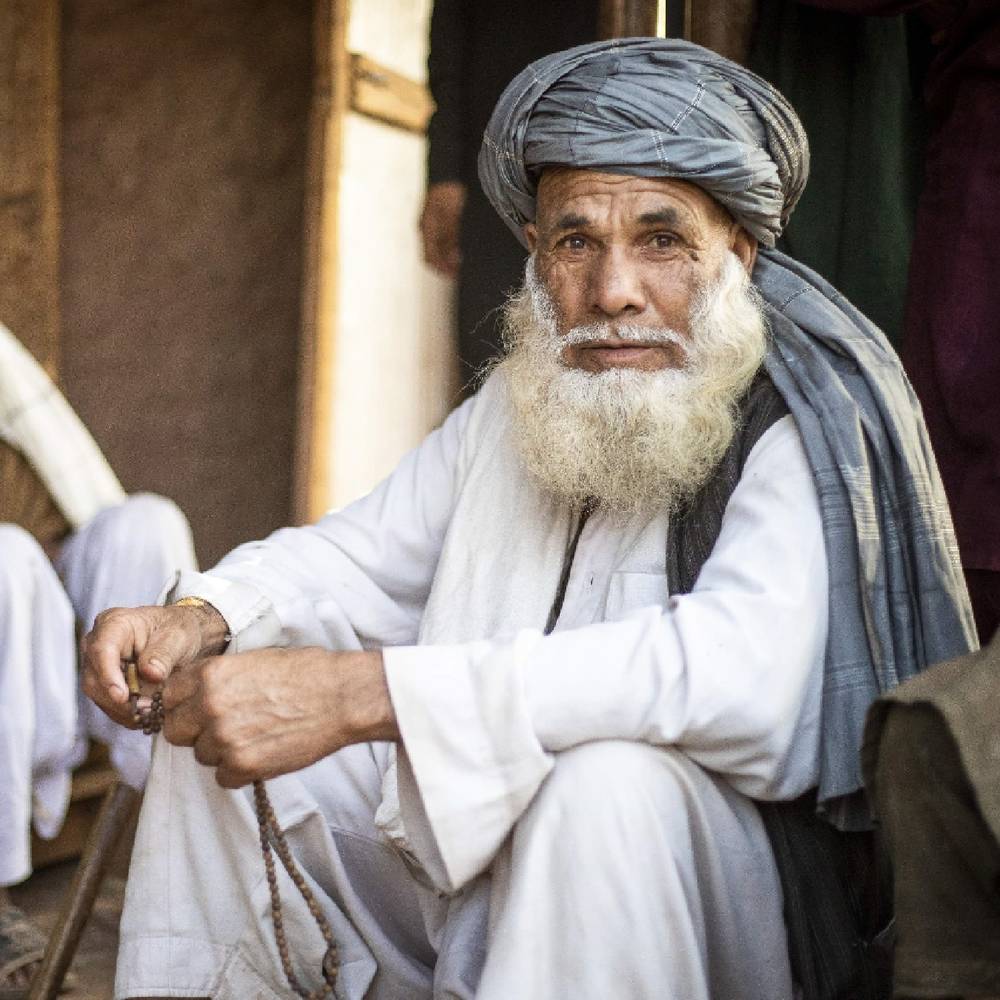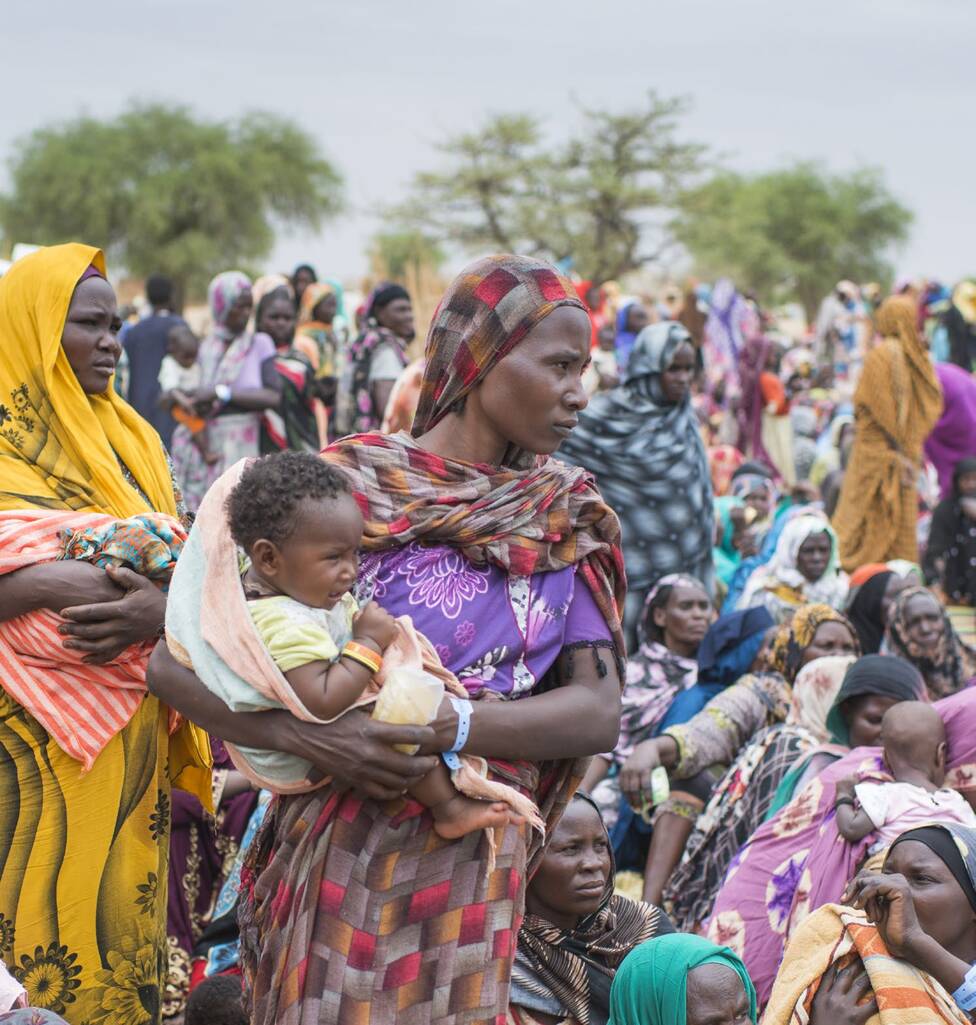The boundaries and names shown and the designations used on this map do not
imply official endorsement or acceptance by the United Nations
 | 28 | Active situation views |  | 3 | Featured situation views | 172 | Countries covered |
 Featured situations
Featured situations

Afghanistan situation
The humanitarian situation inside Afghanistan deteriorated in 2021 with significant consequences for the most vulnerable among the population. Some 3.25 million people are currently displaced by conflict. UNHCR is responding to this emergency. In Iran and Pakistan, which are neighbours of Afghanistan, there are also 2.1 million registered Afghan refugees. The majority of these refugees fled Afghanistan over the years, including from as early as 1979. A further 6.2 million refugees returned to Afghanistan in phases since 2002, but this trends has been declining in recent times. In August 2021, UNHCR has also released a non-return advisory for Afghanistan, calling for a halt on forced returns of Afghan nationals, including asylum seekers who have had their claims rejected. On this page you will find updates on UNHCR's work in support Afghan IDPs, refugees and returnees. Links are also provided below for the individual UNHCR country operation pages for additional information.
Ukraine Refugee Situation
The full-scale invasion of Ukraine in February 2022 has caused massive civilian casualties and the destruction of civilian infrastructure, forcing people to flee their homes seeking safety, protection and assistance. Since February 2022, millions of refugees from Ukraine have crossed borders into neighbouring countries, and millions more have been forced to flee within the country. They are in need of protection and support. In light of the emergency and the scale of humanitarian needs, an inter-agency regional refugee response is being carried out, in support of the efforts of refugee-hosting countries. The Regional Refugee Response Plan brings together national authorities, UN agencies, NGOs, as well as civil society organisations and focuses on supporting host country governments to ensure the inclusion of refugees, with full access to their rights, in line with international standards. It also prioritizes the provision of critical protection services and humanitarian assistance.
Sudan situation
Since the start of the conflict in Sudan in mid-April, large numbers of civilians have been forced to flee, including people who were already internally displaced and refugees from other countries who had sought safety in Sudan. Hundreds of thousands of people have fled into neighbouring countries or returned home in adverse circumstances – notably to the Central African Republic, Chad, Egypt, Ethiopia and South Sudan. Others self-relocated within Sudan. All situations
All situations

Horn of Africa Somalia Situation
Somalia is at the heart of one of the worst humanitarian crises in the world today. Twenty years of conflict and waves of drought have uprooted a quarter of the country’s 7.5 million people. As the region faces its most severe drought in 60 years, the Somali exodus is growing fast. The refugees urgently need medical aid and high-protein, high-energy food. They also need clean water, shelter and basic services in the camps.
Mali Situation
Following violence, hostilities, human rights violations and a rapidly deteriorating humanitarian situation in the northern part of Mali since January 2012, large numbers of Malians have been seeking refuge in Burkina Faso, Mauritania and Niger or displaced internally.
Nigeria Situation
Northern Nigeria’s conflict with Boko Haram spilled over to the Lake Chad Basin region, where Nigerian refugees are hosted since 2014, causing large scale forced displacement and an unprecedented humanitarian emergency in Cameroon, Chad and Niger.
Syria Regional Refugee Response
Over 5.6 million refugees have fled Syria since 2011, seeking safety in Turkey, Lebanon, Jordan, Iraq, Egypt and beyond. After almost six years of war in Syria, refugee vulnerabilities and poverty are on the rise, the impact on host communities continues to grow, and funding for the humanitarian response is not keeping up with the needs
South Sudan
As the protracted emergency enters its sixth year, the South Sudan situation remains the largest refugee situation on the African continent. There are over 2.2 million refugees in Sudan, Uganda, Ethiopia, Kenya and the Democratic Republic of the Congo and a further 1.8 million people displaced internally in South Sudan. The situation continues to be characterized as a children’s crisis with children constituting over 65 percent of the refugee population.
Central African Republic Regional Response
The dire crisis in the Central African Republic continues to trigger massive forced displacement, increasing pressure on resources and living conditions in host communities and countries. Intense militia activity and inter-community violence hampers humanitarian access and exposes civilians to serious protection risks. According to OCHA, CAR remains the country with the highest humanitarian needs per capita, with 50 per cent of the population having to rely on humanitarian assistance to survive, while 25 per cent is displaced either internally or in a neighbouring country.
Voluntary Return of Ivorian Refugees
Since 2011, UNHCR has facilitated the voluntary return in safety and dignity of over 111,000 Ivorian refugees and about 200,000 returned spontaneously.
Mediterranean Situation
Persecution, conflict and poverty forced over 1 million people to flee to Europe in 2015. Many came seeking safety for themselves and their families, risking their lives and facing a treacherous journey
Burundi Situation
Over 300,000 refugees have fled Burundi to the Democratic Republic of the Congo, Rwanda, Tanzania and Uganda since April 2015. The situation in Burundi remains complex; while refugees continue to arrive throughout the region, others are deciding to return home. The Burundi refugee response remains one of the most underfunding refugee situations in the world.
DRC Situation
The on-going conflicts in the Democratic Republic of the Congo (DRC) have caused and continue to cause internal and external displacement of populations. In 2017, some 100,000 Congolese fled to neighbouring countries as refugees, due to widespread militia activities, unrest and violence, joining the 585,000 already in exile. The security conditions in DRC, especially in the eastern and central parts have continued to worsen since the beginning of 2018. Because of this, the Congolese refugee population is now among the ten largest in the world. Nearly 55 per cent are children, many crossing borders unaccompanied or separated. Existing camps and sites in many asylum countries are saturated, and available basic services are stretched to the limit. The situation requires support, adequate resources and collaboration so that effective protection and assistance can be delivered efficiently to Congolese refugees.
Central America & Mexico
Forced displacement continues to grow in numbers, and in complexity. Gang violence, persecution and human rights violations have left no other choice for around 720,000 people from the North of Central America but to flee either internally or across borders. The social and political crisis in Nicaragua since April 2018 has forced over 100,000 nationals to neighboring countries. UNHCR has expanded its presence and operational capacity in recent years to strengthen protection alternatives and facilitate solutions for those affected.
Venezuela Situation
Despite the increase in spontaneous returns of refugees and migrants to Venezuela, the outflow of Venezuelan nationals in need of international protection persists. By March 2023, figures provided by national authorities indicate that there are 7.2 million refugees and migrants from Venezuela worldwide, with the vast majority (6.03 million) hosted in Latin America and the Caribbean. More than 4.3 million residence permits and regular stay have been granted to Venezuelans in host countries, allowing them to remain there legally and to access basic rights and services. By June 2022, some 211,000 Venezuelan individuals were granted refugee status by national authorities.
CCCM Somalia Overview
Highlighting the internal displacement in Somalia
CCCM Northern Syria Overview
Highlighting the internal displacement in Northern Syria
Refugee Response in Bangladesh
This is the largest and swiftest refugee exodus witnessed in the region in decades with more than 712,738 refugees fleeing from Myanmar’s Rakhine State to Bangladesh since 25 August 2017. Their displacement occurred against a background of decades of discrimination and statelessness. Although the influx has slowed since the onset of the crisis, new arrivals are still reported, joining an existing refugee population.
Syria Regional Refugee Response: Durable Solutions
Durable solutions for refugees from Syria are based on a comprehensive protection and solutions strategy which seeks to: i) support host country and community resilience; ii) enable refugee self-reliance, including access to services, legal work opportunities and livelihoods; iii) expand access to resettlement in third countries and other complementary pathways, and; iv) plan for the return of refugees to Syria, on a voluntary basis, when conditions for a safe, dignified and sustainable return are in place.
Eradication of Statelessness in the East and Horn of Africa, and the Great Lakes Region
Highlighting statelessness in the 12 Member States of the ICGLR, and what is being done to eradicate it. Media coverage, testimonies of stateless persons, reports on the issue and all documents pertaining to the Brazzaville Declaration process can be consulted in English, French, Portuguese and Arabic.
South Eastern Europe
Following the de facto closure of the so-called Western Balkans (WB) route in March 2016, severe border policies led to fragmentation of the mixed flows of migrants and refugees through the South East Europe (SEE), opening new smuggling pathways in parts of WB that had not been affected so far. In addition to the shift in movement patterns, the intensity of migration has also substantially augmented throughout the region. Still, the majority of new arrivals view the SEE as a transit region for their journey to final destinations in the northern and western EU.
Sahel Crisis
The Central Sahel region (Burkina Faso, Mali and Niger) is facing a severe humanitarian and protection crisis, pushing millions of people to flee their homes. Indiscriminate attacks by armed groups against civilians, summary executions of men, widespread use of rape against women, as well as attacks on State institutions, including schools and health facilities, are the latest drivers of displacement impacting a region already struggling with climate change, extreme poverty, a lack of economic opportunities and scarce basic services.


